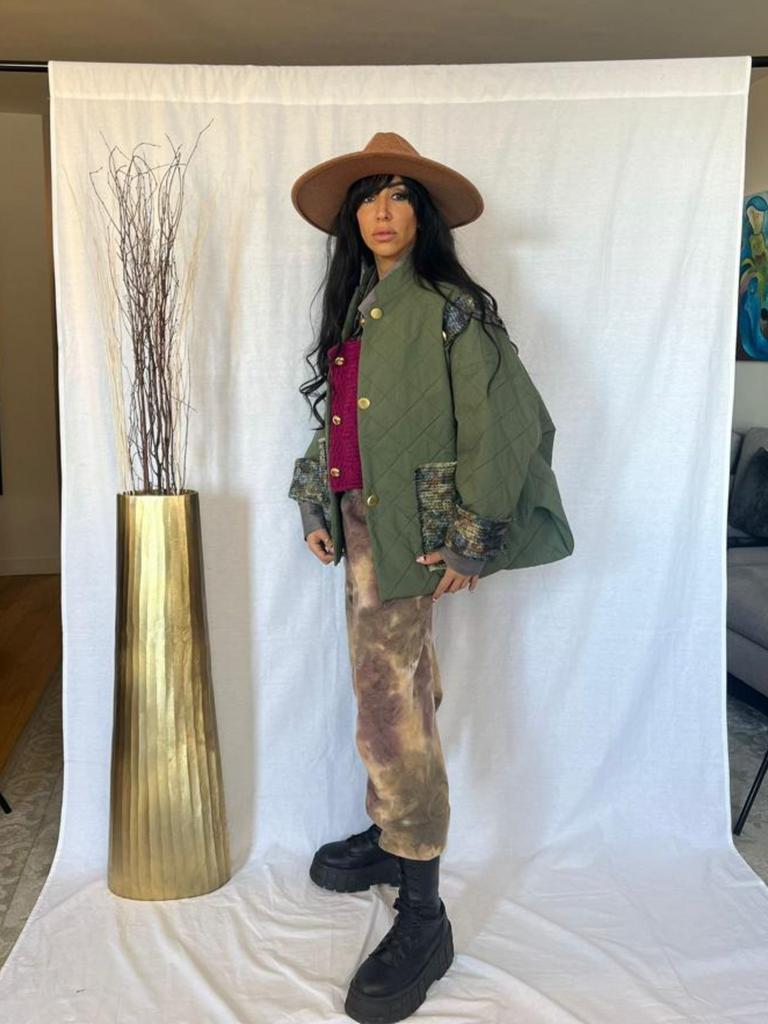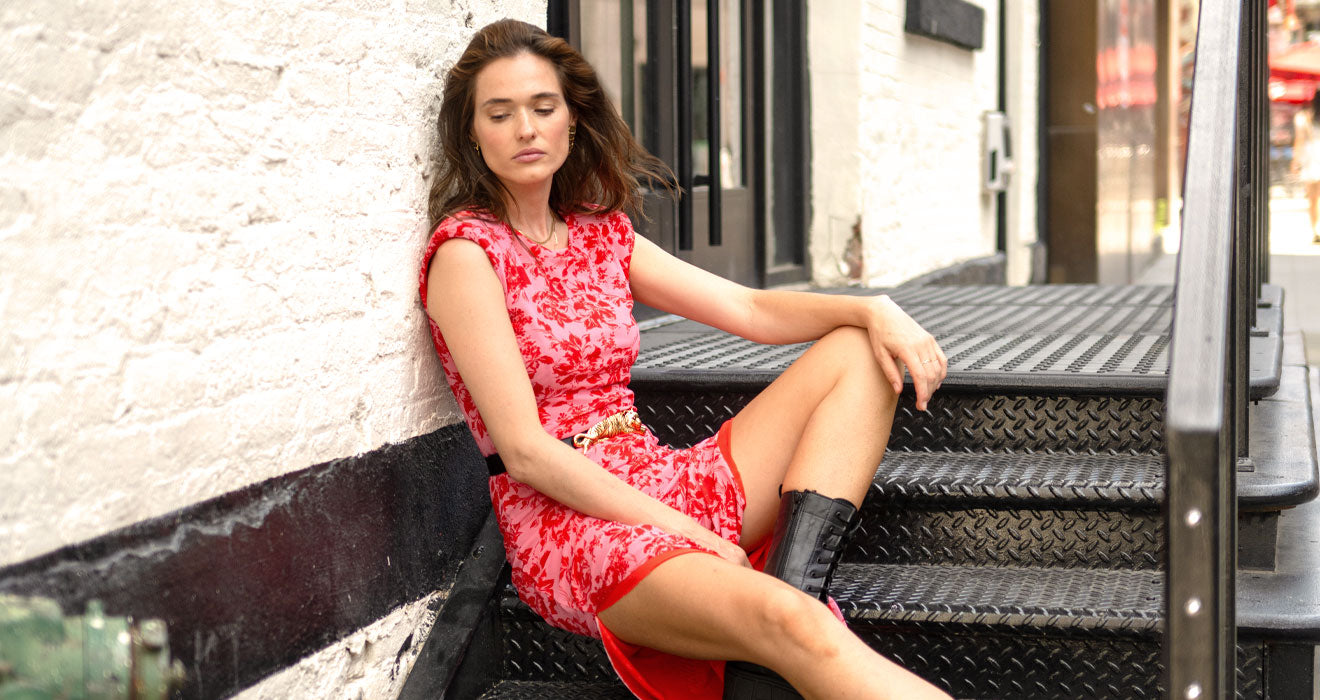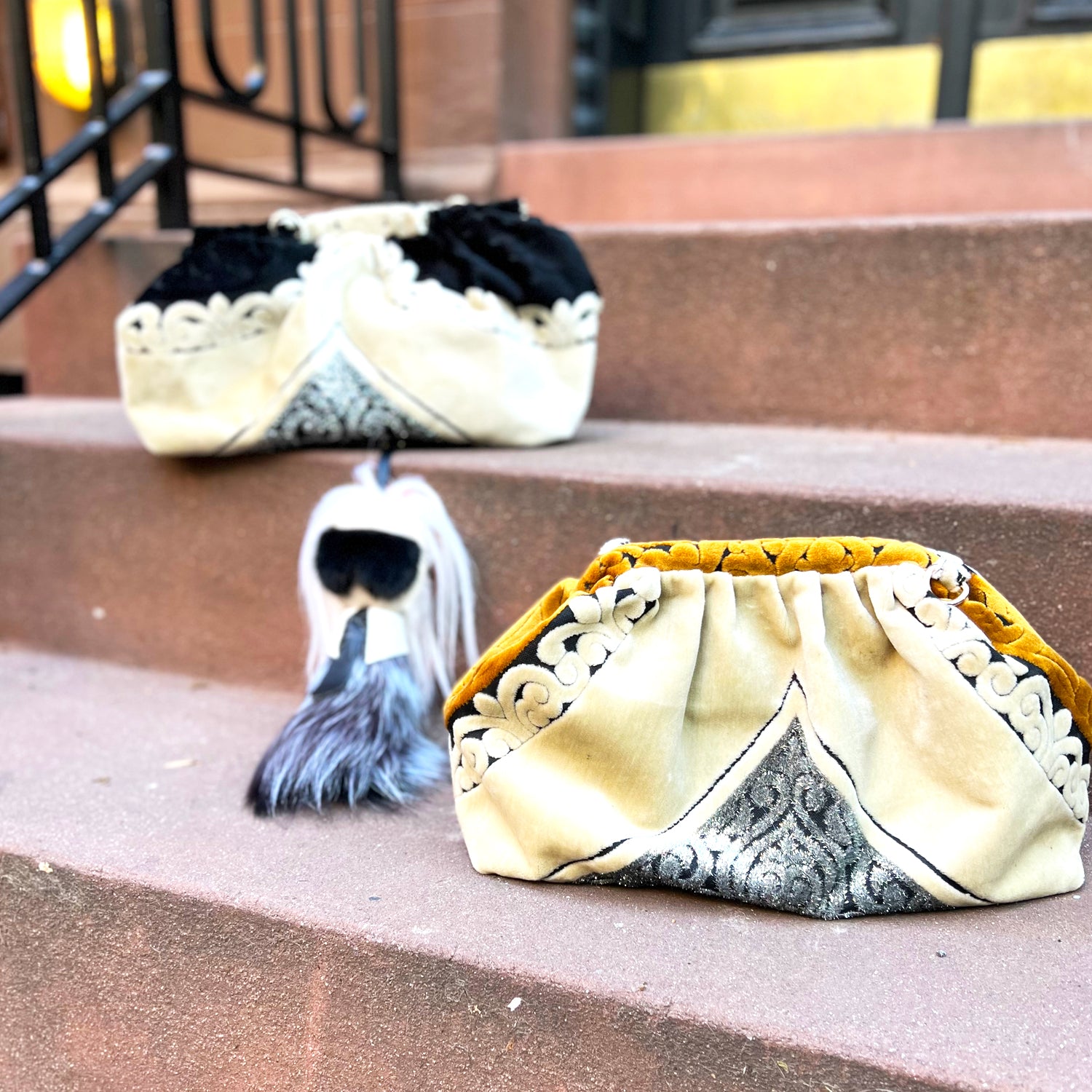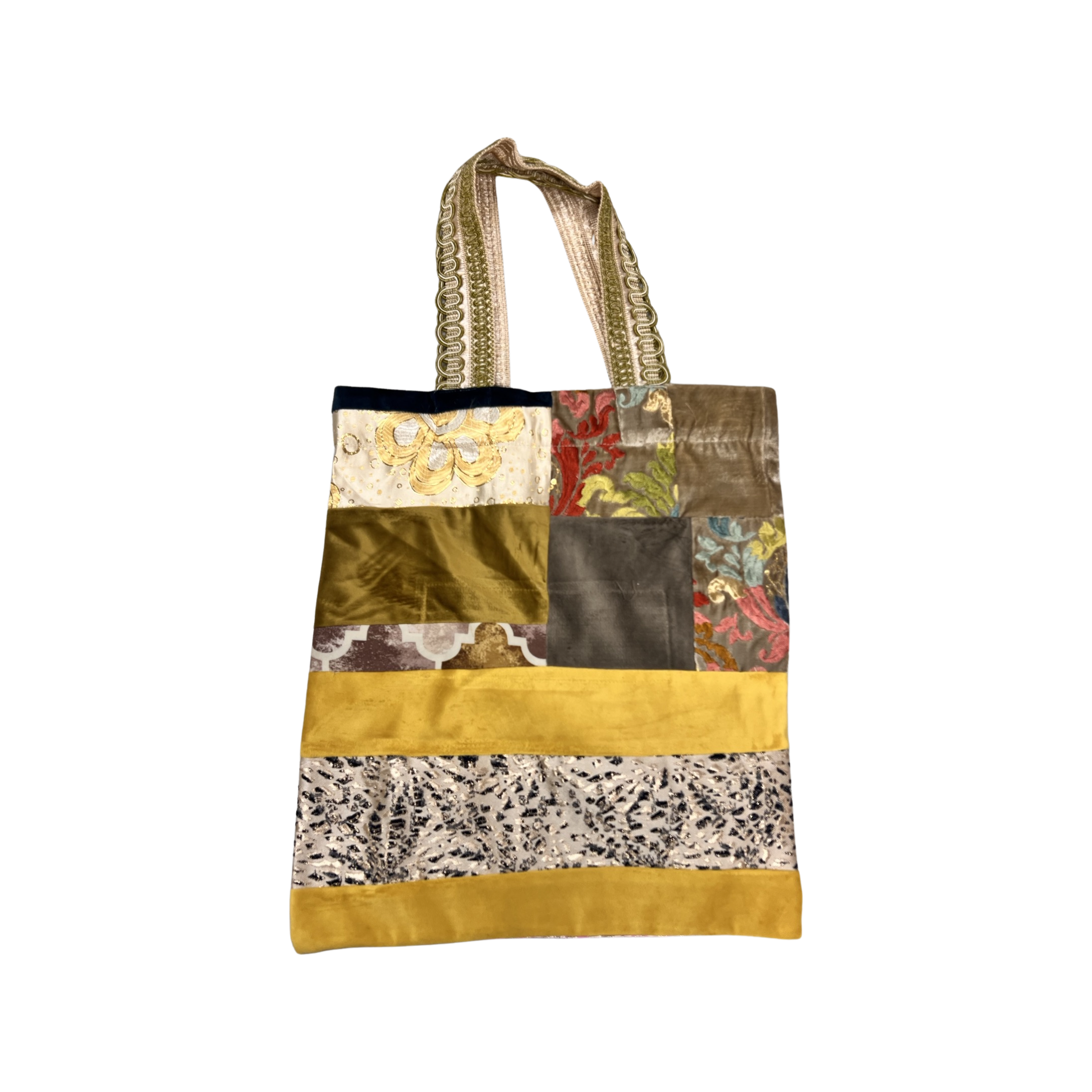 Conversations surrounding the fashion industry’s environmental footprint and the true cost of making clothes have sparked a heated debate surrounding the accessibility and affordability of sustainable fashion.
Conversations surrounding the fashion industry’s environmental footprint and the true cost of making clothes have sparked a heated debate surrounding the accessibility and affordability of sustainable fashion.
In his recent tweet, intended to reach a niche audience, fashion writer David Guy's message was originally well-received by a like-minded audience, igniting a friendly conversation about how buying less and purchasing higher-quality pieces is a better choice than consuming piles of cheaper, in-one-day-out-the-next, fast fashion items. It was a was a seemingly uncontroversial message—until it wasn’t.
When Twitter’s algorithm somehow made his posts visible to a much wider audience, the message was less than agreeably received. Tweets blasting the writer for his remarks sparked a fury of comments from people who felt that his recommendations to purchase higher quality pieces or seek out previously loved items at second-hand stores were impractical, out-of-touch, and even elitist.
Guy, like many of us who write about fashion for a living, found himself in the midst of a hot debate that started a conversation in the collective fashion universe, begging the question so often asked, can sustainability and affordability coexist in the fashion industry? 
The idea of closing the fashion loop by buying less, upcycling quality items from the past, and lowering the recreation of new items that are here one minute and gone the next sounds reasonable, but if sustainable brands and high-end second-hand shops are not accessible to the everyday public, then does it really help?
The idea of buying quality items and taking good care of them, being mindful of the impact purchases of fast fashion have on the environment, not treating garments as disposable commodities, and participating in global change by buying from “green” fashion brands sounds great - in theory.
But if these items, practices, and brands are not accessible to the masses, is it really sustainable or just the trend du jour? And it leaves one to wondering if sustainability in fashion is even possible for the everyday consumer.

This conversation has certainly hit a nerve because it insults the efforts of brands truly making an effort to not just be sustainable, but affordable at the same time. And if in the discussion, an assumption is being made that consumers who buy fast fashion don’t care about the environment, the whole thing can certainly sound (or be) highly divisive.
Criticism of the fashion industry’s impact is typically focused on low-cost, fast-fashion labels whose low prices and high volumes are connected to inhumane labor practices, waste, and overconsumption. But, the truth is, just because a label brands itself as sustainable doesn’t always make it so. Because making a product responsibly sometimes costs more, products branded as “sustainable” often carry a hefty price tag, making them unrealistic to the everyday consumer. And the options suggested to be responsible and available to all, like hunting for quality secondhand pieces, not only take time and effort but are simply not realistic for anyone who doesn’t live in or near one of the larger fashion centers.

Opening a can of worms, this conversation, and the issues surrounding it, have seemed to shame the less affluent consumer by suggesting that their only option is buying “used” clothing or none at all, saving the shiny new items for those who can afford them.
There is this misconception that if one pays more for a product, then it must be more environmentally friendly, and the people making the products must be paid and treated fairly in the process. But sustainability advocates and those in the business of greenwash-watching are quick to point out that exploitation, wastefulness, and pollution can happen at every end of the fashion spectrum, from fast, inexpensive brands to the highest prices luxury labels.

And many high-end brands are less transparent, hiding behind their history and notoriety to get away with not sharing human rights violations and their company’s real carbon footprint. While they may not produce the mass amount of new items every season the way fast fashion brands do, some of the biggest names in luxury still produce huge volumes of resource-sucking clothing, being as much a part of the problem by inducing a constant craving for the latest trends.
Case in point are the fashion weeks taking place as we speak. Fueling a passion for the newest and brightest for the media to tell consumers what they just have to have next, high-end brands are just as responsible for fueling the fashion fire as the less expensive, more affordable fast fashion brands.

So, what is true?
Supposedly, a sustainable product isn't manufactured and marketed with the sole purpose of making a profit, but is instead produced to be an ethical and viable alternative. But, sustainable fashion requires more complex material sourcing and manufacturing methods, often demanding materials to be recycled or repurposed. As these methods are more complicated and less common, the associated costs are higher.
Although sustainable fashion might have a higher initial price point, its longevity makes it a worthy investment. Instead of buying something, throwing it away, and replacing it a few months later, sustainable clothing demands less frequent purchases, saving the consumer money in the long run. And because fewer purchases also help reduce energy use, buying sustainable clothing lessens the overall environmental impact made my the consumer and the industry.
A significant rise in sustainable culture has begun flooding the garment industry. As luxury powerhouses and street labels alike continue to make sustainability a key element of their corporate messaging, it seems that every day another brand is announcing an eco-conscious collection or a socially responsible initiative aimed at reducing waste and increasing planet awareness.

A growing number of fashion labels are weaving environmental sustainability into their brand ethos, revolving their marketing efforts around how they’re bettering the world with their eco-conscious practices. But a paradox exists in an industry that urges shoppers to purchase new looks every season while also attempting to convince consumers to pare down. No matter how much sustainability sells, a large portion of eco-friendly fashion brands are typically not affordable for the masses, restricted to higher-end brands for the wealthy minority.
The more affordable fast fashion brands have attempted to make their own attempts at creating sustainability-related messaging, but with massive inventories and large brick-and-mortar carbon footprints, how honest can their claims really be? Hidden behind the bargains, pesticide use, human exploitation, and waste are keeping real sustainability far out of reach.

And it’s not just brands that are being less than transparent. The secret is out among shoppers too.
Apparently, it’s not just the world’s less affluent consumers who are padding the pockets of the fast fashion brands of the world. Wealthy shoppers are stuffing their closets with frequent online fast fashion hauls at alarming rates.
Studies have actually shown that the wealthiest 20% of fashion consumers have a carbon footprint 20 times higher than the poorest 20 percent.
The fact is, the reason this topic is so hot is that it forces consumers and brands to take a good long hard look in the mirror, get honest, and confront the role they play in the big global picture.

And with consumers reprioritizing how and where they spend their money, brands must respond to stay relevant.
For the environment to become a true business priority, fashion brands at both ends of the price scale must commit to the cause and weave sustainability into every level of their operations before ever making green initiatives the center of splashy marketing campaigns. This requires businesses to take a good look at their own data, evaluate what’s important to their customers, and strategize what they need to do to keep those consumers buying their products.
Many positive changes can contribute to a brand’s sustainable philosophy. Opting for smaller inventory, decreasing brick-and-mortar space, paying fairer wages, sourcing locally, and manufacturing ethically are some small steps that can get the ball rolling.
So, if high prices don’t equal high standards and fast fashion doesn’t necessarily equate to exploitation and pollution, what’s the answer?

The truth is sustainability doesn’t have to be exclusive to the pricier fashion market. Fast and slow fashion must each slow down their desire to accumulate capital and speed up their collective eco-concerns for sustainability to truly coexist so the everyday consumer doesn’t need to choose between the two.
Can fashion be sustainable, affordable, and not so fast without making us all furious?
When factoring fashion, sustainability, and affordability into the equation, zero-waste fashion is a simple solution to a complicated problem.
A marriage of reducing waste and slowing down production is at the center of a whole new leg of the fashion industry. Not cheap, fast fashion and not expensive, slow high-end, zero-waste brands have emerged to create unique fashion options that are not only planet-friendly but are accessible and more affordable to the everyday consumer. Combining style with sustainability, zero-waste brands like L2R are leading the charge.

By using the already-made and improved-upon, and turning it into something fresh, upcycling keeps older clothing and textiles in circulation–not landfills. Circular fashion takes the onus off of the consumer to shop secondhand and places it back onto the fashion industry to take what’s old and make it new again.
The use of deadstock and already existing fabrics like pattern cut-offs and discards gives clothing a second lease on life. Reducing fashion industry waste, and therefore the number of chemicals, water, and greenhouse gasses produced when manufacturing fabrics, reduces the amount of new clothing becoming yesterday’s trash.
And customers are getting wiser to the situation every day. Growing increasingly tired of greenwashed catchphrases, consumers are becoming savvier about their purchases and ready for transparency and action – not just empty promises. 
Meeting customer demands to see change happen and bring true eco-chic style to market, L2R is making unique, upcycled, and one-of-a-kind designs accessible and affordable. Crafted from fabric remnants and disregarded textiles, using ethically-sourced deadstock, outcasts, and discards, L2R’s designers and a growing number of happy-to-get-involved stylists, photographers, models, and writers have come together to create masterpieces for change.
Using only ethically-sourced remnants, previously loved garments, and luxury scrap fabric, and partnering with artisans and small factories around the globe, L2R offers consumers a real path towards sustainability, the power to advance their values without compromising their personal style, and affordable price tags, making greener options more sustainable and accessible.
L2R designs are focused on creating universal patterns and silhouettes, gender-fluidity, relaxed fits, and oversized silhouettes, with a diversity in fabric and texture that showcases vibrant colors, embroidery, prints, and unique impressions in every piece. Making sustainability affordable, a commitment to meeting consumer demands for eco-kindness is woven into the very thread of the brand.

Absolute zero waste production means no thread or shred of fabric ever goes to waste. By restoring, reimagining, and reinventing, creating unique pieces that work across the collections, surpass the seasons, and outlive short-lived trends, zero-waste brands like L2R are making it possible for sustainability and affordability to truly coexist.










1 comment
Skye K.
More articles like this! Please!
More articles like this! Please!